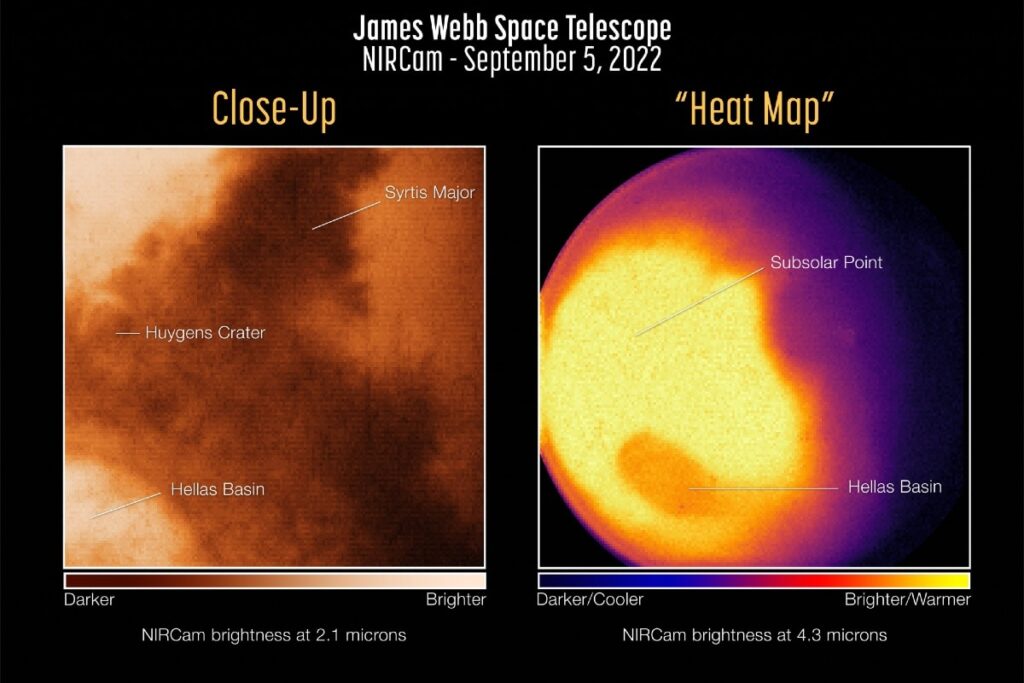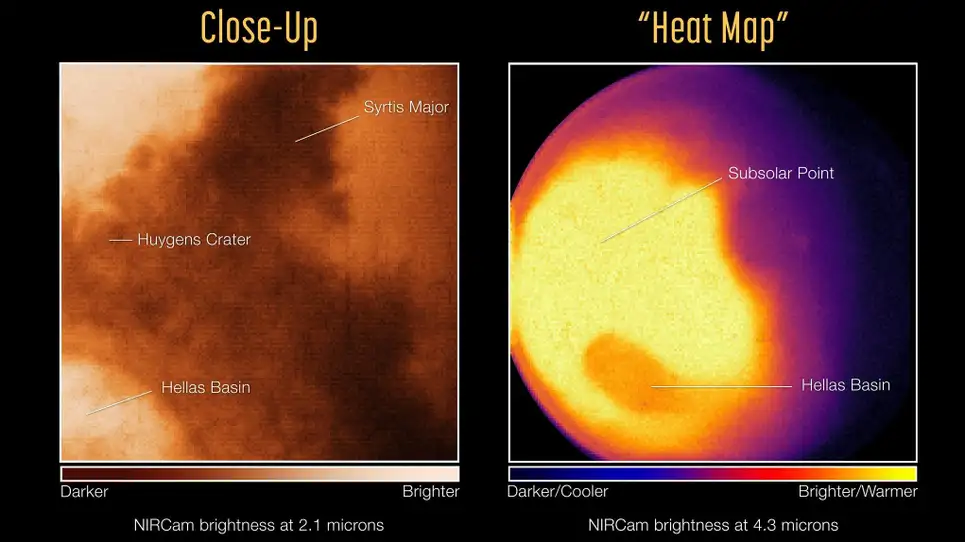The James Webb Space Telescope has captured its first images and spectrum data of Mars.

The European Space Agency (ESA) released the James Webb Space Telescope’s (JWST) first images and infrared spectrum of Mars. The Webb telescope captured its first images and spectra of the red planet on September 5, 2022.
Webb is situated approximately 1.5 million kilometres away from our planet at the second Sun-Earth Lagrange point (L2). From the telescope’s vantage point, it gets a view of Mars’ observable disk, which is the portion of the sunlit side facing the telescope. This allows JWST to capture images and spectra with the specific resolution needed to study short-term phenomena. These phenomena include dust storms, weather patterns, and seasonal changes.
detector saturation:
While this may not sound impressive for a telescope that is designed to detect distant faint objects, it actually is. Mars is very close to the Earth and it is one of the brightest objects in the night sky, in both visible and infrared light. But since Webb’s instruments are so sensitive, the bright infrared light from Mars is almost blinding, causing something known as “detector saturation.”
Scientists need to use special detection techniques in order to overcome this, including using very short exposures and measuring only some of the light that hits the detectors. They then used special data analysis techniques to arrive at the image.
JWST’s first images of Mars were captured by the Near-Infrared Camera (NIRCam) and shows a part of the planet’s eastern hemisphere at two different wavelengths. The image above contains a surface reference map taken by NASA’s Mars Global Surveyor on the left and two Webb NIRCam instrument fields overlaid on the right.
Web images:
The Webb images of Mars show differences in brightness over a large number of wavelengths from place to place across the planet at a particular date and time. But the spectrum illustrates the subtle variations in brightness between hundreds of different wavelengths that represent the planet as a whole. Astronomers will analyse features of the spectrum to gather additional information about the surface and atmosphere of the planet.











More Stories
Aamir Khan: ‘रिलेशनशिप छिपाने में यकीन नहीं रखता’, गर्लफ्रेंड गौरी पर बोले आमिर खान- रिश्ता स्वीकारना मुश्किल था
Hina Khan flaunts bridal glow at awards show after wedding to Rocky Jaiswal; rocks purple saree
6 महीने में मर जाओगे… 230 किलो के अदनान सामी को जब डॉक्टर ने दी थी चेतावनी